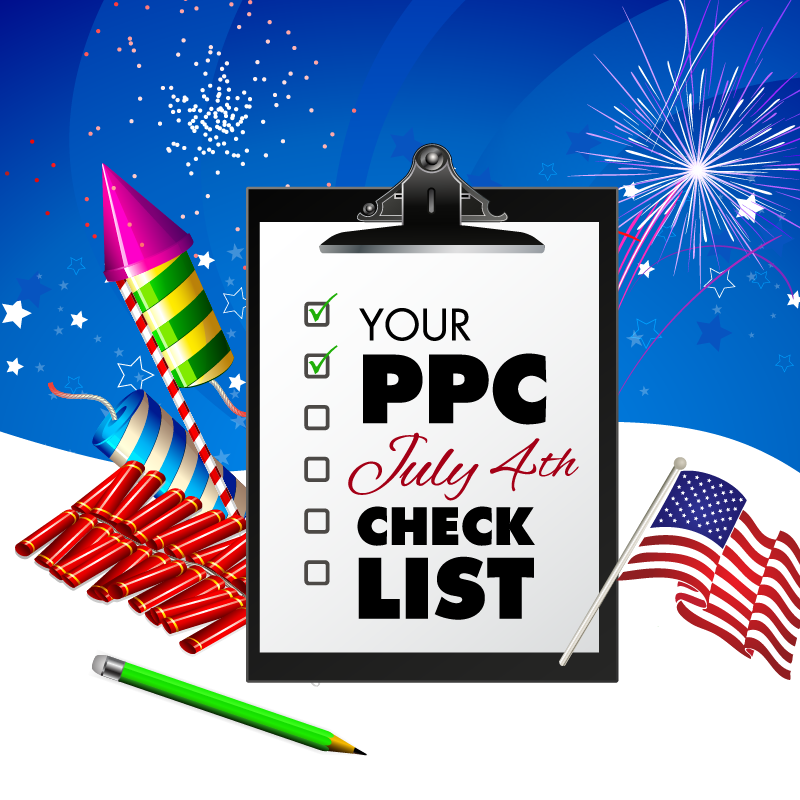Summer’s almost here, so here’s Didit’s pre-July 4, pre-getaway PPC checklist
June 23, 2014: Summer’s upon us, and your natural inclination is likely to head to the beach, forget about the vicious competitive battles of the PPC auction, and simply let your PPC campaigns run “on auto-pilot.” While it’s tempting to do this, don’t leave the office without making things are really tied down (I don’t need to remind you that Summer is also Hurricane Season).
Here are 7 action items you should take care of in the next couple of weeks before heading off — call it my “Summer Pre-Getaway PPC Checklist.” Follow it and your summer will be more relaxed, more profitable, and when it’s time to finally return to the office you can do so with pride — instead of in a panic.
1. Revisit Your Keyword Research. I’ve never seen a keyword-based campaign that can’t be improved by revisiting and refining keyword lists. Search behavior changes constantly, and your company/brand isn’t static either (especially if you’re selling products/services that change over time), and terms come in and out of common usage due to a wide range of influences (including the influence of media that you may or may not be tracking as part of your campaign). Think of your keyword lists as “living documents” and you won’t get caught flat-footed this summer when user behavior changes.
2. Keep Your Eye on the Ball. PPC marketers are awash in metric (especially now that social data are increasingly being plugged into their management consoles). But too many of them are paying attention to the wrong metrics: the ones that don’t matter. The best approach to cutting through the “metrics clutter” is to divide your metrics into those that matter in the short term (i.e. a real-time view of what’s happening in the auction market at any moment in time) coupled with a long-term view of LTV (Lifetime Customer Value). ROAS (Return on Ad Spend) is an OK metric as long as your margins are consistent and your LTV doesn’t vary widely across your customer base. If they’re not, you’ll need to work on your models before spending too much more with the engines.
3. Test landing pages and bids at the keyword level. Remember, user intent for two different keywords can be different — sometimes radically different. This means that you’ve got to test different landing pages for different keyword sets. Sometimes users of one set want to have a completely different experience, for example, one that’s more informational than sales-oriented. Think of each keyword set as describing a “persona” that you need to target independently. In the same way that you need to regard each keyword set as a candidate for a unique landing page, remember that each keyword phrase constitutes its own auction that may deserve its own unique bid. Don’t make the mistake of setting bids at the Ad Group level. Make your bidding decisions with the granularity they deserve. The only exception to this rule is the case of very low-volume keywords.
4. Treat Contextual Networks With Caution. It’s great that Google provides its Content Network as a place to achieve additional scale and reach. But don’t make the mistake of starting any new campaigns with the Content Network default set to “on.” In my experience, using a two-step approach works best. Get your search network campaign parameters set correctly, test all important variables, optimize your results, and then (and only then) turn the Content Network on. This way, you can see whether the Content Network is providing a lift (which it might) or a drag (which it also might).
5. Don’t Ignore Broad and Phrase match. Sure, we all love Exact Match (because we all love high Quality Scores). But that’s no reason to rule out match types that might not be as efficient but can still yield quality traffic that you’ll miss out on if you’re not targeting more broadly via phrase and broad match. Think Broad and Phrase Match are always inefficient? Test your assumptions and you’ll know the answer.
6. Don’t Rule Out Bidding On Your Own Name. Even if you’re ruling the SERP in terms of organic position, you shouldn’t ignore the upside possible when you bid on your own name. A quick and easy pulse test should be able to tell you very quickly whether doing so drives or depresses your KPIs.
7. Dump Those Budget Caps. I don’t mean to harp on the issue of budget caps, but I’ve seen their destructive influence again and again. They only use they have is to limit downside on PPC campaigns that are a mess to begin with. If your campaign is in good shape (and it should be if you’ve incorporated my points 1 through 6), you’ll never need them.
I hope you have a great Summer 2014!
- 10 Mistakes to Avoid When Using QR Codes for Marketing - September 20, 2023
- Kevin Lee on How AI Changes the SEO Landscape - August 31, 2023
- The Power of Compound Marketing: Kevin Lee Presents @ 1MediaWorld 2023 Global Conference - March 7, 2023

